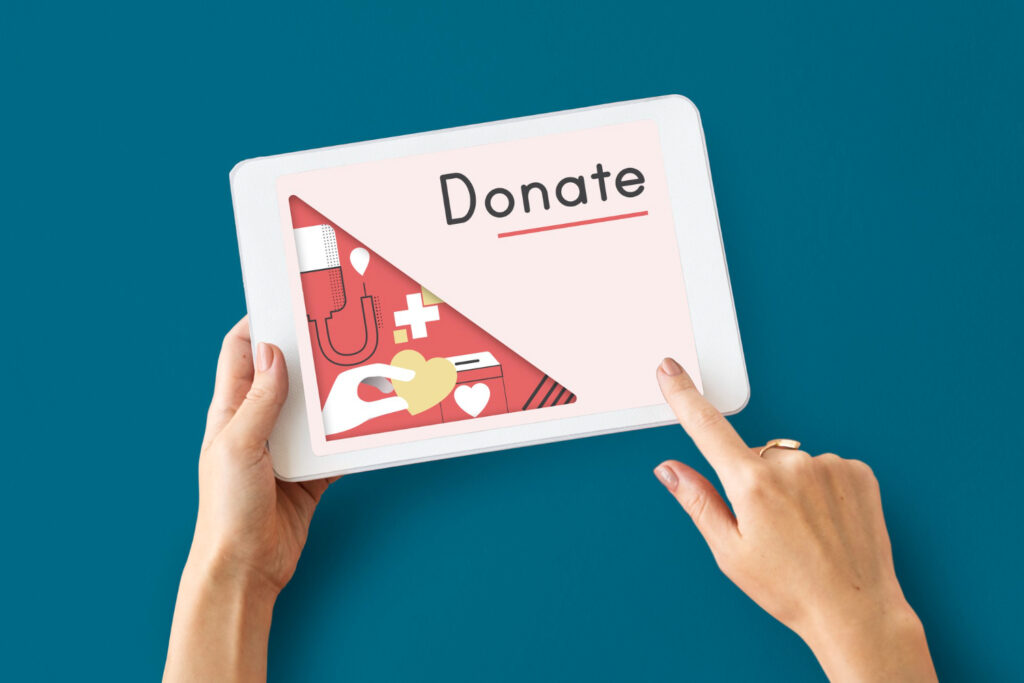
By dev March 11, 2025
Two terms that are frequently used in the context of online transactions and nonprofit payments are payment processors and donation software. Despite their apparent similarities, they have distinct functions and are necessary for efficient donor transactions. Nonprofits can select the best tools to optimize their fundraising potential by being aware of the main distinctions between online payment gateways and donation processing systems.
By the end, you’ll have a clear idea of which solution best fits your organization’s needs.
What is Donation Software?
Choosing the right donation software is crucial for nonprofits that want to streamline fundraising efforts and enhance donor engagement. A well-integrated system can save time, reduce manual efforts, and provide valuable insights into donor behavior, helping organizations maximize their impact.?
Definition and Purpose
Donation software is a tool specifically designed for nonprofits to manage donations and donor relationships. It serves as an all-in-one platform that not only facilitates donations but also provides additional features to help organizations grow their donor base, track contributions, and engage supporters.
Key Features of Donation Software
- Customizable Donation Pages – Nonprofits can create branded donation pages tailored to their campaigns.
- Recurring Donations – Enables donors to set up automatic contributions, improving retention rates.
- Donor Management – Stores donor information, helping organizations build lasting relationships.
- Fundraising Tools – Includes peer-to-peer fundraising, crowdfunding, and event-based donations.
- Reporting and Analytics – Tracks donation trends and campaign performance.
- Integrations – Often integrates with CRMs, email marketing platforms, and online payment gateways.
How Donation Software Works
Donation software makes donor transactions easier by providing a user-friendly interface that makes it simple for supporters to make contributions. The software gathers the donor’s details, handles the payment (through a payment processor), and logs the transaction in the system when the donor makes a gift. After that, nonprofits can follow up with donors, automate receipts, and access reports.

What is a Payment Processor?
Selecting the right payment processor is crucial for nonprofits looking to ensure seamless and secure donor transactions. A well-chosen processor can minimize transaction fees, speed up fund transfers, and provide fraud protection, all while integrating smoothly with donation software to support nonprofit payments effectively.?
Definition and Purpose
A payment processor is a financial service that handles transactions between donors and nonprofits. It serves as a bridge between the donor’s payment method (credit card, debit card, bank account) and the nonprofit’s bank account, ensuring the secure transfer of funds.
Key Features of Payment Processors
- Secure Transactions – Ensures encrypted and PCI-compliant transactions.
- Multiple Payment Methods – Accepts credit cards, debit cards, ACH transfers, and digital wallets.
- Fraud Protection – Includes fraud detection tools to safeguard against suspicious transactions.
- Fast Fund Transfers – Deposits funds into the nonprofit’s account, often within a few days.
- Chargeback Management – Handles disputes and refunds.
- Global Payments – Some processors support international transactions.
How Payment Processors Work
The payment processor verifies the donor’s information and available funds before authorizing the payment when the donor starts a transaction. The processor transfers the money from the donor’s account to the nonprofit’s account upon approval. Although the final settlement may take longer, this process usually takes a few seconds.
Key Differences Between Donation Software and Payment Processors
Understanding the differences between donation software and payment processors can help nonprofits make informed decisions about their fundraising infrastructure. While both play a crucial role in handling donor transactions, they serve distinct purposes and offer unique features that cater to different aspects of donation processing and nonprofit payments.
1. Functionality
- Donation software is a comprehensive fundraising platform that manages donations, donor data, and fundraising campaigns.
- Payment processors are financial intermediaries that handle transaction authorization and fund transfers.
2. Scope of Use
- Donation software provides additional tools beyond processing payments, such as donor engagement, campaign tracking, and automated thank-you messages.
- Payment processors focus solely on facilitating online payments, without offering donor management features.
3. User Experience
- Donation software provides a seamless experience for nonprofits, helping them create donation pages and manage donor relationships.
- Payment processors operate behind the scenes, working in conjunction with donation software to process transactions.
4. Integration Needs
- Donation software typically integrates with payment processors to handle financial transactions.
- Payment processors require donation software or a website to facilitate nonprofit payments, as they do not offer standalone donation pages.
5. Security and Compliance
- Payment processors are responsible for transaction security, ensuring PCI compliance and fraud detection.
- Donation software relies on payment processors for secure transactions but adds donor-centric security features, such as data encryption and donor history protection.
How They Work Together
To make their fundraising efforts more efficient, the majority of nonprofits use both payment processors and donation software. While the payment processor safely transfers the money, the donation software gathers donor information, offers fundraising resources, and keeps track of contributions.
For example:
- A donor visits a nonprofit’s website and fills out a donation form (powered by donation software).
- The donation software sends the payment details to the payment processor.
- The payment processor authenticates and processes the transaction.
- The funds are deposited into the nonprofit’s account, and the donation software records the transaction.
- The donor receives an automated receipt and thank-you message.
Choosing the Right Solution for Your Nonprofit
The requirements, financial constraints, and fundraising objectives of your nonprofit will all play a role in choosing the best option. A payment processor alone may be sufficient for certain nonprofits to enable safe transactions, while others may benefit from an all-in-one donation software that handles campaigns and donor relationships. You can improve your fundraising efforts by making an informed decision if you know how each tool works.
When to Use Donation Software
If your nonprofit needs an all-in-one fundraising solution, donation software is the better choice. It allows you to:
- Manage donor relationships.
- Run campaigns with recurring giving options.
- Generate reports on donor trends.
- Automate thank-you messages and follow-ups.
When to Use a Payment Processor
If your nonprofit already has a fundraising system in place and only needs a tool to process transactions, a payment processor is sufficient. This is ideal when:
- You have a custom-built donation platform.
- Your website already collects donation information.
- You need a high level of security and fraud protection for donor transactions.

Popular Donation Software and Payment Processors
Nonprofits must choose the appropriate payment processor and donation software to guarantee safe online payment gateways and smooth donation processing. Payment processors manage the technical facets of donor transactions, while donation software assists in managing donor relationships and fundraising initiatives. These are a few popular options in each category.
Top Donation Software
- Donorbox – A user-friendly platform with recurring donation options.
- Fundly – Supports crowdfunding and peer-to-peer fundraising.
- Bloomerang – Focuses on donor retention and engagement.
- NeonCRM – A comprehensive nonprofit management system.
Top Payment Processors
- Stripe – Offers robust online payment gateway solutions.
- PayPal – A widely used platform with easy integration.
- Square – Great for in-person and online donations.
- Authorize.net – Provides secure and customizable transaction processing.
Conclusion
Despite their close relationship, payment processors and donation software have distinct roles in nonprofit payments and donation processing. Organizations can maximize their fundraising efforts by having a clear understanding of their roles.
Donation software is the ideal option for nonprofits wishing to oversee donor relationships and fundraising initiatives. However, a payment processor by itself might be adequate if handling secure transactions is the main requirement. To guarantee seamless, effective donor transactions, it is usually best to use both.
Nonprofits can improve donor experiences, boost fundraising efforts, and eventually increase donations to their cause by choosing the appropriate tools.